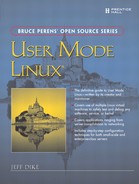Book Description
With User Mode Linux you can create virtual Linux machines within a Linux computer and use them to safely test and debug applications, network services, and even kernels. You can try out new distributions, experiment with buggy software, and even test security. Now, for the first time, the creator and maintainer of User Mode Linux shows how to put it to work hands-on. Jeff Dike covers everything from getting started through running enterprise-class User Mode Linux servers. You'll find authoritative advice on bootup, compilation, administration, specialized configurations, and much more.
Coverage includes
What User Mode Linux is, how it works, and its uses in Linux networks
Key applications, including server consolidation, development, and disaster recovery
Booting and exploration: logins, consoles, swap space, partitioned disks, and more
Copy-On-Write (COW): UML's efficient approach to storing filesystem changes
In-depth discussion of User Mode Linux networking and security
Centrally managing User Mode Linux instances, and controlling their hardware resources
Implementing clusters and other specialized configurations
Setting up User Mode Linux servers, step-by-step: small-scale and large-scale examples
The future of virtualization and User Mode Linux
Whether you're a netadmin, sysadmin, teacher, student, or programmer, User Mode Linux®--the technology and this book--is indispensable.
Table of Contents
- Cover Page
- Title Page
- Copyright Page
- Contents
- Preface
- Acknowledgments
- About the Author
- 1 Introduction
- 2 A Quick Look at UML
- 3 Exploring UML
- 4 A Second UML Instance
- 5 Playing with a UML Instance
- 6 UML Filesystem Management
- 7 UML Networking in Depth
- 8 Managing UML Instances from the Host
- 9 Host Setup for a Small UML Server
- 10 Large UML Server Management
- 11 Compiling UML from Source
- 12 Specialized UML Configurations
- 13 The Future of UML
- A UML Command-Line Options
- B UML Utilities Reference
- Index
- Footnote
